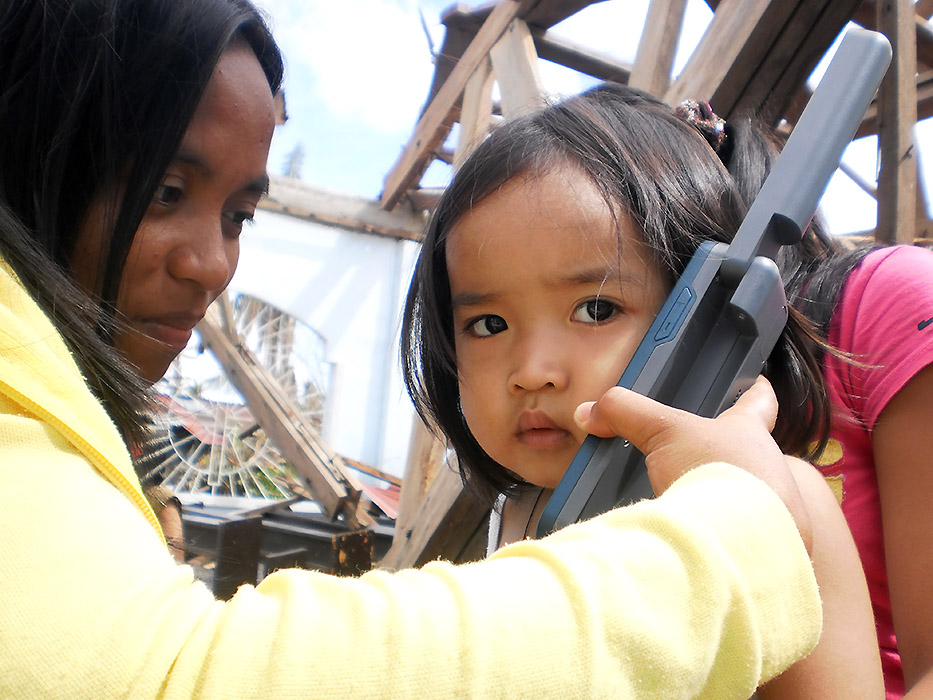Typhoon Bopha
Context: Typhoon
Start date: 02/12/2012
End date: 28/12/2012
Areas of intervention: Davao oriental
Activities:
- Telecoms centres
- Humanitarian calls operations
3 telecom centres
8,100 MB of data transferred
8 organisations supported
531 calls offered
2,022 minutes of calls
Context
Typhoon Bopha, hit the islands of Mindanao on 4th December, left more than 778,000 people displaced, 1,500 dead and 890 people missing across the country. In total more than 5.5 million people were affected.
Deployment
TSF, deployed from its Bangkok Regional Base, was already set up in Manila since 2nd December in order to coordinate with local authorities and response agencies the anticipation of the cyclone. During the first days of the disaster, TSF experts assessed the damage of the telecommunication infrastructures in the most affected communes of East Davao, in collaboration with the Red Cross, OCHA, UNICEF, UNDAC teams and regional government units.
TSF provided satellite connections to local authorities (Civil Protection, Army) and rescue teams (ICRC, health department, medical staff), in addition to humanitarian phone calls operations for the benefit of hundreds of families.
Telecom Centres
TSF established three emergency telecom centers in Cateel, Baganga and Boston thanks to several satellite connections that provided humanitarian workers with the broadband Internet connection needed to coordinate their actions in the field. The Cateel-based TSF telecom centre became a Regional Coordination Centre for all NGOs, UN agencies and local authorities in the area (DOH, WFP, OCHA, ICRC, etc.).
Following the gradual re-establishment of telecommunication networks, the satellite connection of the Baganga center was stopped on 20 January, the one of the Boston centre on January 26, and the one of the inter NGO Cateel centre was transferred to OCHA teams.
As the Philippine archipelago is regularly hit by violent typhoons, in 2011 TSF conducted an emergency telecommunications capacity building program with the National Council of Reduction and Risk Management (NDRRMC). On this occasion, several emergency telecommunication kits were offered by TSF. During this mission, the NDRRMC deployed one of these kits on one of their coordination center in Baganga, thus ensuring the coordination of relief efforts in the affected area.
Humanitarian calling operations
TSF teams worked with refugee families in various evacuation camps in Cateel, Baganga, Boston and Monkayo, and conducted humanitarian calling operations. Hundreds of families were able to reach their relatives and inform them of their situation.
This mission marked the very first deployment of the Instant Network solution in an emergency situation. Thanks to the satellite connection established by TSF, the device made it possible to create a mobile network at the heart of the crisis for humanitarian workers and populations. The Instant Network ran for 17 days, until local operators' infrastructure was back up, allowing more than 300,000 calls and nearly 600,000 messages.


























